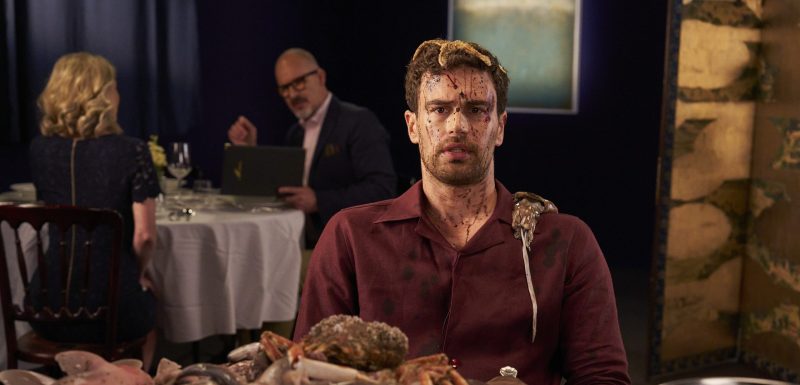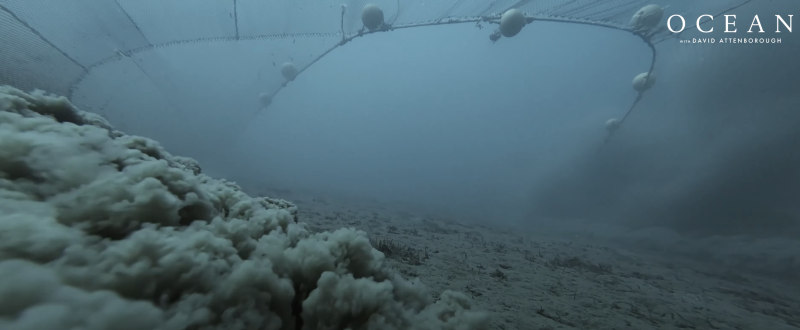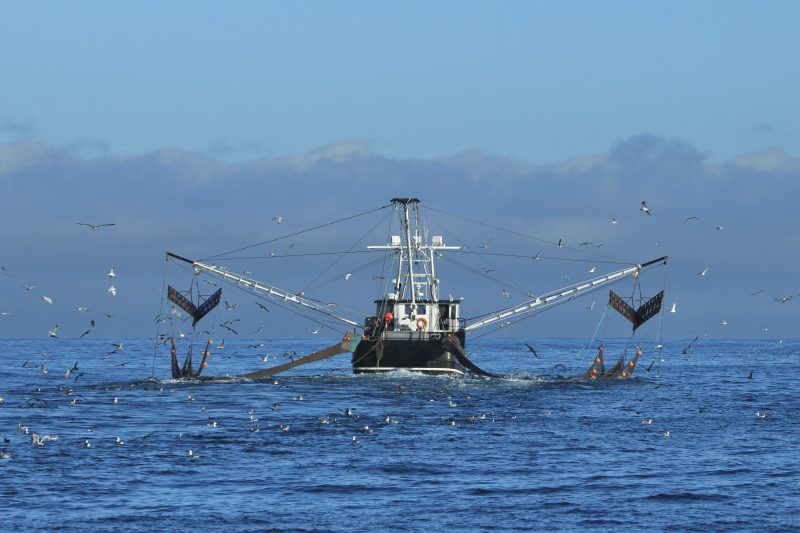What is #TheBottomLine campaign film trying to achieve?
#TheBottomLine is a 90 second campaign short directed by BAFTA award-winning Ben Mallaby, featuring Blue Marine ambassadors Theo James and Stephen Fry who will be acting in the short to help drive forward an urgently needed ban on bottom trawling in the UK’s marine protected areas (MPAs).
Why Theo James and Stephen Fry?
Theo and Stephen are both ambassadors for Blue Marine.
What is bottom trawling?
Bottom-trawling (dragging heavy gear and nets along the sea floor) and dredging (raking the sea floor with steel teeth and chain mesh) is a destructive fishing practice and yet it is still permitted on 90% of UK’s Marine Protected Areas.
What is bycatch?
Bycatch is the caught species which cannot be sold or are not allowed to keep (due to being illegal to catch or undersized). Bycatch can be fish, but also includes other animals such as dolphins, whales, sea turtles, and seabirds that become hooked or entangled in fishing gear.
What are Marine Protected Areas?
Marine protected areas (MPAs) are ocean areas set aside for marine life to thrive and recover. This is essential for healthy, functioning marine ecosystems and we have already seen extraordinary recovery of marine life where destructive fishing methods have been removed. MPAs can be found inshore (less than 12 nautical miles from the shore) and offshore.
When fully protected MPAs can provide safe havens for marine life, including endangered species and our carbon stores which are found within our seabed. In the UK MPAs have been designated as Marine Conservation Zones (MCZs), Special Areas of Conservation (SACs), Nature Conservation MPAs (NCMPAs) or Special Protection Areas (SPAs).
How bad is the issue of trawling in Marine Protected Areas in the UK?
Only 10% of UK domestic MPAs are fully protected from bottom trawling across the whole site. A new study by Oceana UK published on 20 May 2025 found that UK offshore MPAs designated for their seabed features suffered over 20,600 hours of suspected bottom trawling in 2024 alone.
How did you come to the 90% MPAs ravaged by bottom trawling stat?
We are calling for whole site bans across UK domestic MPAs and currently, only 38 of 377 UK (10%) of these MPAs have trawling banned across their whole site. This means 90% of the MPAs still permit bottom trawling within them.
What fish is Theo eating in the film?
Theo orders plaice in ‘Bycatch Supper’. Plaice is a flatfish which is found on our seabed, meaning that it is caught using a destructive fishing method – trawling.
Plaice is caught using a beam trawler. Beam trawlers consist of a heavy tubular steel beam supported by steel beam heads at each end. These beam heads have wide shoes at the bottom which slide over the seabed, catching not only plaice – but everything else in its path (bycatch).
Where did Blue Marine get the bycatch from?
The bycatch sourced for the film was all caught as genuine bycatch from a commercial vessel (a beam trawler, which is how plaice is caught). The bycatch used would have otherwise been discarded overboard or sold for bait (to increase the amount of target species that can be caught).
The 68kg of bycatch sourced for the film was up of 27 species and included six species shark and ray, sourced for the film are species which can be found throughout the water column, from the surface down to the seabed and even within the seabed.
Why is some bycatch discarded and not sold?
Some bycatch from bottom trawling can be sold as bait or animal feed, but much of it is discarded (thrown back overboard, often dead) due to its low commercial value. Bycatch from bottom trawling also includes under-sized and juvenile fish which cannot be legally sold as food or cannot be landed due to the catch not being included in a vessel’s allocated quota (the limit on the quantity of fish that a specific fishing vessel is allowed to catch within a given period and area).
How did you dispose of the fish used in the shoot?
After the shoot, the bycatch was taken to Billingsgate to dispose along with their waste disposal. The species and quantities used for the shoot were not of interest to fishers to use as bait, which was offered.
Is Blue Marine an anti-fishing NGO?
No, one of Blue Marine’s main ambitions is to support low-impact small-scale fishing and equitable use of the sea. We support many projects working directly with and supporting small-scale fisheries in the UK, Europe and further afield. We aim to tackle inequitable distribution of marine resources, with fair support and access to fishing grounds and stocks for sustainable small-scale fisheries and support a just transition away from destructive fishing methods.
There is also little evidence of ‘anti fishing’ NGOs – there are NGOs that regularly campaign against overfishing and destructive fishing but the idea that there are legions of NGOs going around campaigning that all fishing should be banned is untrue. Criticising damaging elements of any industry is not ‘anti’ that industry.
















